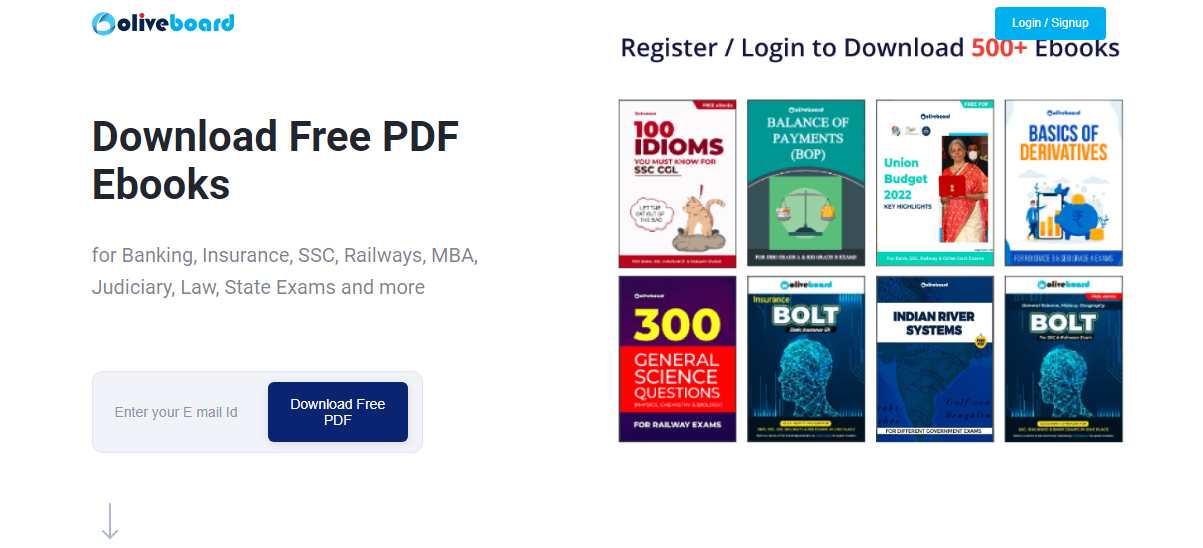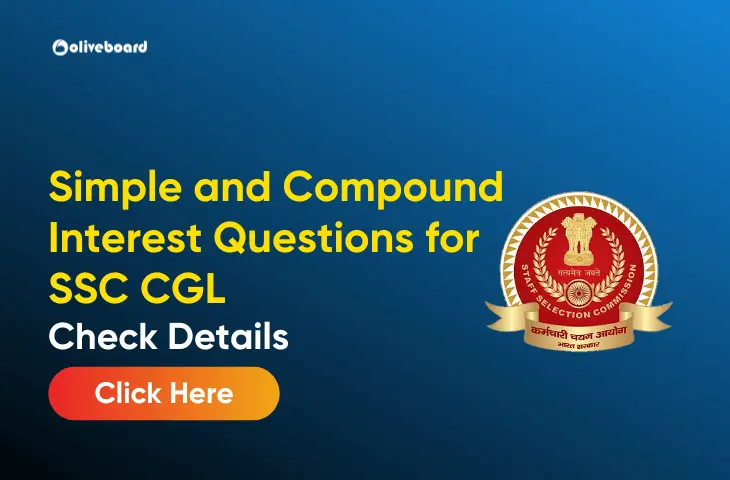Simple Interest And Comount Interest In SSC CGL
The Questions related to Simple Interest and Compound Interest are most commonly asked in most competitive exams conducted by the Staff Selection Commission. It is a scoring topic if you can grasp the basic concepts. In this blog, we will be providing simple and compound interest questions that will be beneficial for the SSC CGL Exam 2024 preparation.
SSC CGL Exam 2024 – Overview
The SSC CGL 2024 Notification will be released on 11th June 2024 and the SSC CGL Exam 2024 has been scheduled to be held from September to October 2024. Further details regarding the SSC CGK Exam have been provided in the table below:
| Particulars | SSC CGL 2024 Notification Details |
| Name | Staff Selection Commission Combined Graduate Level (SSC CGL) |
| Conducted by | Staff Selection Commission (SSC) |
| Exam Level | National |
| Frequency | Yearly |
| Vacancies | To be announced |
| Exam Mode | Online |
| Exam Duration | Tier-I: 60 minutes, Tier-II: 2 hours 15 minutes ( Paper – I) |
| Purpose of Exam | To select candidates for Group B and C posts in various departments of the Government of India |
| Language | Multilingual |
| Exam Helpdesk No. | 011-69999845 |
| Official Website | ssc.gov.in |
What is Simple Interest?
Simple Interest is calculated only on the principal amount or the initial sum of money. The formula to calculate Simple Interest is:
Simple Interest= P*R*T/100 where,
- P = Principal amount
- R = Rate of interest per year
- T = Time period in years
What is Compound Interest?
Compound Interest is calculated on the principal amount and also on the accumulated interest of previous periods. The formula to calculate Compound Interest is:
Compound Interest= P(1+R/100)T-P where,
- P = Principal amount
- R = Annual interest rate
- T = Time period in years
SSC CGL Simple Interest and Compound Interest Questions
1. A sum of Rs. 12,000, at compound interest becomes double after 5 years. How much will it be after 20 years?
a) Rs. 1,20,000
b) Rs. 1,44,000
c) Rs. 1,92,000
d) Rs. 1, 50,000
2. At what rate of compound interest per annum will a sum of Rs 20000 become Rs 23328 in 2 years?
a) 8 per cent
b) 12 per cent
c) 24 per cent
d) 16 per cent
3. A sum of money at compound interest doubles itself in 15 years. It will become eight times of itself in
a) 48 years
b) 45 years
c) 60 years
d) 54 years
4. What will the compound interest for a period of 6 months be calculated quarterly at the rate of 20% on a principal amount of Rs. 32,000 be?
a) Rs. 4160
b) Rs. 4360
c) Rs. 4080
d) Rs. 4280
5. Ram lends Rs. 2500 to Rahul at the rate of 2% compound interest. How much extra money will he have earned at the end of 2 years?
a) Rs. 110
b) Rs. 101
c) Rs. 108
d) Rs. 103
6. In how many years will a principal amount of Rs. 1000 become Rs. 1728 when compounded annually at the rate of 20% per annum.
a) 3
b) 5
c) 7
d) 9
7. At what rate of compound interest per annum will a sum of Rs 10000 become Rs 12321 in 2 years?
a) 7 per cent
b) 11 per cent
c) 15 per cent
d) 22 per cent
8. If the compound interest on a certain sum for 2 years at 4% p.a. is Rs. 102, the simple interest at the same rate of interest for two years would be?
(a) Rs. 50
(b) Rs. 100
(c) Rs. 150
(d) Rs. 200
9. A sum of Rs. 2668 amounts to Rs. 4669 in 5yr at the rate of simple interest. Find the rate of interest.
a) 14.90%
b) 15%
c) 15.20%
d) 16%
10. Raj deposits an amount of Rs. 65800 at the rate of 14% per annum for 4 yr. What total amount will Raj get at the end of 4 yrs.?
a) Rs.115246
b) Rs. 110324
c) Rs.102648
d) Rs.125578
The following was a sneak peek into the contents of the e-book, for the complete e-book containing the full set of questions with solutions the candidates/aspirants can download using the link provided below.
How to Download SSC CGL SI-CI Questions E-book?
Step 1: Click on the download link. You will be redirected to Oliveboard’s FREE E-Books Page.

Step 2: Create a free Oliveboard account or login using your existing Oliveboard account details
Step 3: Download the book by clicking on the link presented on the page.
That was all about the SSC CGL Simple and Compound Interest Questions. We hope that it will prove beneficial for exam preparation. For more updates, stay connected with Oliveboard.
SSC CGL Simple and Compound Interest – FAQs
The main difference is that Simple Interest is calculated only on the principal amount, while Compound Interest is calculated on the principal amount plus any interest that has been added to it.
For Simple Interest, the interest increases linearly with time. For Compound Interest, the interest grows exponentially with time due to the effect of compounding.

Oliveboard is a learning & practice platform for premier entrance exams. We have helped over 1 crore users since 2012 with their Bank, SSC, Railways, Insurance, Teaching and other competitive Exams preparation.
Oliveboard Live Courses & Mock Test Series
- Monthly Current Affairs 2024
- Download RBI Grade B PYQ PDF
- Download IFSCA Grade A PYQs
- Download SEBI Grade A PYQs
- Attempt Free SSC CGL Mock Test 2024
- Attempt Free IBPS Mock Test 2024
- Attempt Free SSC CHSL Mock Test 2024
- Download Oliveboard App
- Follow Us on Google News for Latest Update
- Join Telegram Group for Latest Govt Jobs Update


